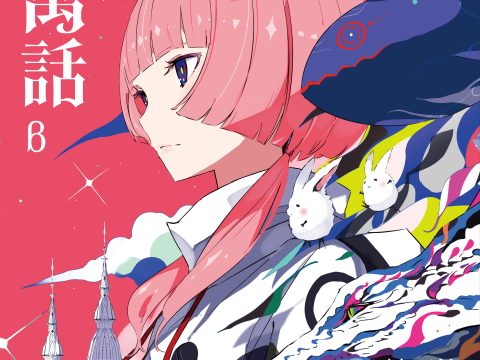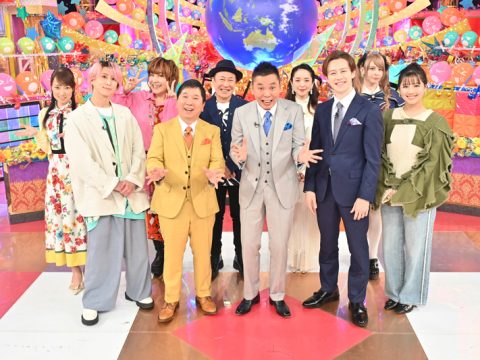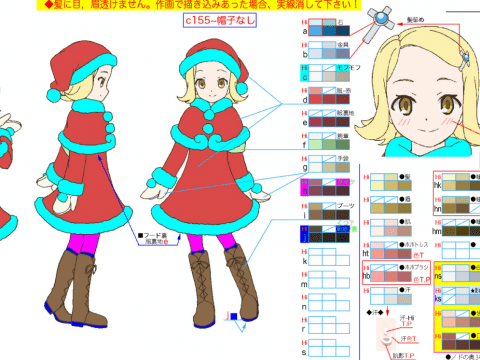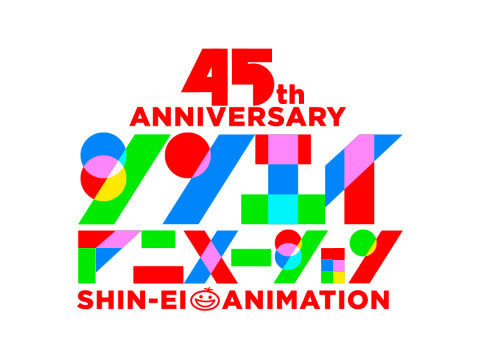Behind The Magic

We’re always told that the sky is the limit, that we all will have that one “dream job” we aspire to land no matter what. For Aoi Miyamori, that dream job lies in the anime industry. She, along with her four best friends—Ema Yasuhara, Shizuka Sakaki, Misa Todo, and Midori Imai—have held on to the aspiration of creating the latest, hottest anime that will inspire the next generation of fans since high school. Two and half years after graduation, it looks like that aspiration is becoming reality. They’ve gone their separate ways and into different fields of specialty. Aoi, in particular, ends up joining Musashino Animation as a production assistant, while her friend Ema Yasuhara becomes a key animator at the same company.
But as Aoi quickly learns, you don’t get to experience a good dream without going through a few nightmares first. Between following the harsh advice from her several bosses, ensuring that key animators finish their work on time, and correcting the mistakes of her fellow production runner, that dream has been replaced by brutal stress and constant freak-outs. So it turns out that the limit is actually next Wednesday, because that’s when she needs to meet a particular deadline, lest the company’s latest project go up in flames.

Welcome, ladies and gentlemen, to Shirobako, a fall 2014 dramedy anime directed by Tsutomu Mizushima (the man behind hits like Squid Girl and Girls und Panzer), and animated by P.A. Works. If you’ve ever wondered where your favorite anime come from, this is the series for you. And in case you’re wondering if this is a documentary, it’s not. In fact, this show is actually the second anime of a “trilogy,” to put it one way, that places sincere spotlights on real-life environments without any comedic exaggerations taking up space. This small collection of shows, all animated by P.A. Works, includes Hanasaku Iroha (running a Japanese inn) and Sakura Quest (rejuvenating a rural town in the era of the big city), with SHIROBAKO (making anime) nestled right between the other two.
Right away, Shirobako distinguishes itself from most anime by simply being about, well, anime! The concept of the anime—a show set in a real-life work environment—is not in itself original, but at the same time, you’d be hard-pressed to find any element in this show that anime fans would already be familiar with. There are no portals to fantasy worlds. There are no exaggerated physical gags. There are no giant robots flying around. There are no magical girls. There are no giant robots flying around disguised as magical girls. And there are certainly no steamy bath scenes.

Its visual execution doesn’t exactly scream “excellence,” and it’d be easy to write it off as the weakest part of the show. My guess is that’s the whole point; I mean, how much flash and how many explosions can you put into a show that’s meant to resemble real life before it’s no longer considered realistic? The visuals aren’t really the concern, here, because it’s not really about the art; it’s about the people the art is portraying, and everything else is only drawn to punctuate that aesthetic. Still, it gets the job done, and there’s at least enough visual personality that offers no real reason for criticism.
The show owes most of its strength to its great pacing, as it steadily explores all the various steps of anime production. For example, a neat economic trick I personally found smart was that the whole series starts in the middle of the production of one of the studio’s anime, as it lets the audience come to know the daily routines with the show’s characters at the pace they themselves experience it. This is further punctuated by, in the first episode, the usage of subtitles to indicate who’s who in the studio without taking up space in the narrative. It might be a turn-off to introduce, say, 23 different characters all at once, but it’s clear all these people are nonetheless significant to the anime-creating process. So quirks like these are much like someone holding our hand as we’re walked through the anime-making process. They save time and bring us up to speed at the same time.

The direction by Tsutomu Mizushima demonstrates a brilliant ability to capture the offhand humor that originates from everyday drama. In Shirobako, there’s solace in talking in the “voices” of two dolls that plot murder or simply rant frustrations, and being locked in a cage is punishment for missing a deadline. Remember, these characters are clearly overstressed and overworked at all times, all of their work being this close to completely falling apart. The humor derives simply from the sheer amount of responsibility these people have on their shoulders. After all, comedy does come from pain.
As pleasantly educational as the whole setting is, Shirobako is first and foremost a character-driven narrative. In fact, you can argue that Shirobako isn’t really about anime; it’s actually about growing up and following your dreams no matter how bad the cards in your hand are. From the beginning, it’s clear what the end-goal is for our five leads, but it’s getting there that turns out to be the hard part. No one simply finds a happy ending right away; they have to push through trial after trial before they can find happiness—look at Shizuka’s story, which contains the most difficult trials of any of the characters. I won’t spoil much, but I will say that it perfectly plays into the show’s affirmation of perseverance for a happy ending and the power of art to unite us all.

Shirobako makes the anime world brutal and thankless by making it … well, completely normal. At Musashino Animation, long hours, bad co-workers, stress, and deadlines are recurring antagonists, and the characters suffer hard lives as a result. At the same time, though, the importance of creating passionate work is what makes all of the knock-backs worth the arrival of the prize. Shirobako may not be about saving the world or awakening the ancient dragon, but it’s clear that making a single episode of your favorite is a perilous journey in its own right.
Shirobako is available from Sentai Filmworks and HIDIVE.
This story appears in the April 2018 issue of Otaku USA Magazine. Click here to get a print copy.







